Instruction
Use launch monitors to rediscover the lost art of shot making

I’m always amazed at what I learn about my own game every time I hit a few shots on my Trackman.
As a full-time golf teacher, I don’t get to practice like I used to in college, but I still enjoy hitting the ball and the feel of a solid golf shot. It’s fun to think back to what I did before in order to hit certain golf shots. These days, however, I can actually audit my feels and these shots using Trackman. What I’ve learned is what actually changes when I hit certain golf shots, as well as what changes occurred within the data that determine what the ball does when it hits the ground.
Armed with this information, I am now better able to predict what will happen when I hit the four different shots I was experimenting with below.
My Stock Shot
This is my “stock” 6-iron shot. I want you to note several things:
- I normally fade the ball, so you will see my swing direction and my club path are moving left of the target line.
- The face angle will be left of the target line, which will help my ball to start to the left of the target and fade back to the target.
- The face is right of the path by 1.5 degrees, which will give it a slight left-to-right bias. This shot is maybe a touch of a heel hit since the spin axis is a little high at 7.1 degrees to the right.
- The spin rate is close to the Tour average of 6,231 and the height is spot on the Tour average at 95.7 feet.
- I carried the ball 168.9 yards with a landing angle of 47.8 degrees.
- My 6-iron has a loft of 29 degrees, which is not quite as strong as some of the others on the market. I do this so I can have the proper gaps between my iron carry distances that suit my game.
Now that we have the stock shot, it’s now time to examine what happens when I practice my shot making with Trackman. I am a firm believer that you must understand how to move the ball up, down, left and right if you want to become a more complete player. I didn’t say you had to curve the ball differently than your normal shot pattern more often, but you need to understand how to do so when necessary.
A Big Fade
In this example, I tried to hit a big left-to-right cut shot and as you can tell by the curvature graph above that I did just that. Let’s examine the data.
- The swing direction and club path shifted dramatically to the left, and this would account for the extreme leftward aim I had while hitting this shot.
- My club face is still left of the target line, but right of the path by 6.8 degrees. That gave me a spin axis of 14.9 degrees, which caused the ball’s curvature. The wind was blowing about 12-to-15 mph from the left, and that also contributed to the rightward curve.
- Ball speed was the same as my stock shot at 122 mph, but the spin rate went up by 1,016 rpm due to the bigger face-to-path discrepancy shown above.
- Dynamic loft went up a few degrees, increasing this ball’s height to 105.6 feet from 95.7 feet.
So what did we learn? Basically, when I aim more left I tend to hit the ball higher. Also, with left-to-right wind patterns that aid the curvature of my golf ball, I tend to hit the ball a touch farther and higher than normal. This might be all I need to do to attack a close pin or hold the ball when landing on the back shelf of a green.
A Big Draw
In this example I tried to hit a hard-hooking shot into the pin. Understand that the wind was blowing about 12-to-15 mph from the left, and thus I hit a softer curve from right to left than you’d expect with the numbers above. So what do we see?
- My swing direction and club path were right-biased, while my face was pointing 8.6 degrees left of the club’s path. With centered impact, whenever the face is pointing left of the path the ball will curve from right to left.
- The ball’s spin axis was 9.2 degrees to the left, which usually indicates a big curve. Remember, however, that the wind was holding the ball and not allowing it to move as much.
- Spin loft was down from 25.1 degrees to 19.4 degrees, adding to the compressed feeling I have when hitting the ball right to left. This is due to the dynamic loft dropping from 19.8 degrees in my stock shot to 13.4 degrees in the hooking example.
- Whenever the dynamic loft lowers, the height of the ball usually follows suit and you can see that this ball is well below the stock shot I hit at 54.8 feet.
- Whenever I hit hard hooks, I always tend to swing faster, increasing my ball speed. That, coupled with lower spin loft and a decrease my overall height, allowed this ball to “cut through the wind” and go even farther than before.
Normally, I would not advocate fighting the wind with your ball’s curvature unless you were a more accomplished player, but in this case the numbers support this as being a better way to “avoid” the wind’s effects. If I didn’t have the numbers to back it up, I’d never know what works best for my game or my students’ games.
The Low Shot
Next comes the low shot, which is one of the best shots any player can learn. We all play in windy conditions from time to time, and have played on days where we don’t have a clue where the ball is going to land. Low shots will help you to control your golf ball on these type of days.
- Notice my angle of attack goes more downward due to the fact that the ball is farther back in my stance and I am working hard to “lean into” the shot to keep it down.
- My stock AoA is around -5.3 degrees, which is a touch more down than the Tour average of -4.1 degrees. Whenever right-handed golfers swing more left (or left-handed golfers swing more right), they also tend to hit more down on the ball. That led to my steeper than normal AoA.
- One thing to be careful of: Whenever the AoA goes more downward, the path will shift more to the right (for a right-handed golfer) and you must aim more to the left.
- I hit this ball on the heel because I had a negative face-to-path relationship, which mandates a right-to-left bias; however, the ball fell to the right because of the heel hit and the touch of the left-to-right that affected the ball flight.
- The heel hit came from an overly upright swing plane through the ball. Anytime my hands lift through impact (in this case from 65.9 degrees to 72.6 degrees), I tend to hit the ball on the heel.
- Dynamic loft went way down to 11.2 degrees and the overall height fell to 40.4 feet.
- Due to the heel hit, the smash factor was down slightly and the ball didn’t carry as far — 163.3 yards — but it was not far off from my stock distance of 168.9 yards.
As players, we all have tendencies that follow us when we hit certain shots and these are nuances that will always tend to arise under pressure. Mine is always standing the club shaft up whenever I try and hit the ball lower, thus causing heel hits. Any guess what my low shot miss is? If you said right of the target, you’re right! I always need to keep that in mind when hitting lower shots. When I forget, I miss the green every single time.
The High Shot
Finally, I hit a higher shot than normal. This is the last shot you’ll need of the four when playing and learning golf. There are some greens that will not hold a shot or shots from elevated tee boxes where you can gain extra distance from a higher-than-normal shot when it’s windy. High shots can be a savior when used at the right time.
- When placing the ball more forward in the stance and staying “behind” it longer, I will tend to move my low point backward and this decreases the angle of attack I have normally. This more shallow AoA helps me to “throw” the club head a touch earlier, increasing the dynamic loft and launch angle in efforts to hit the ball higher.
- Dynamic loft goes from 11.2 degrees on the low shot to 19.8 degrees on my stock shot to 26.7 degrees on my high shot.
- The height on my low shot was 40.4 feet, my stock shot was 95.7 and my high shot was 121.2 feet high! That’s still lower than Jason Day’s stock height of 131 feet!
- Whenever I hit the ball higher, I also tend to lay the club face back and open the face a touch more at impact than usual. This leads to a higher-than-normal spin axis at 12.7 degrees, so I need to aim more left to accommodate this. That’s why I had more leftward swing and path numbers.
- The high shot produced the second highest ball speed at 124.4 mph. This is due to the fact that when the ball is more forward I have more “time” to create speed.
So what’s the takeaway from this article? If you have access to a Trackman or FlightScope Doppler launch monitor, you need to hit a ton of shots so you can understand what your stock numbers tend to be. From there, I would suggest doing what I did and practice your shot making to see what trends develop as you hit the four different shots I did. This will help you discover your tendencies, as well learn things that you need to look out for when hitting these different shot patterns.
We all can get bound up in the numbers if we are not careful, but remember that if you know your tendencies you will know how to control your golf ball. From there, you can get around the golf course in any conditions on any day!
- LIKE4
- LEGIT0
- WOW0
- LOL0
- IDHT0
- FLOP0
- OB0
- SHANK0
Instruction
Clement: Weak grips are injuries in the making for many golfers

Like Jordan Spieth, trying to go to a bowed wrist at the top or in the downswing to square the club is placing you in a dangerous position for your lead wrist; you are one tree root or deep rough situation away from a nasty injury that could easily require surgery. Don’t let this be you.
- LIKE1
- LEGIT0
- WOW0
- LOL0
- IDHT1
- FLOP2
- OB0
- SHANK3
Instruction
Clement: Laid-off or perfect fade? Across-the-line or perfect draw?

Some call the image on the left laid off, but if you are hitting a fade, this could be a perfect backswing for it! Same for across the line for a draw! Stop racking your brain with perceived mistakes and simply match backswing to shot shape!
- LIKE2
- LEGIT0
- WOW0
- LOL0
- IDHT0
- FLOP0
- OB0
- SHANK1
Instruction
The Wedge Guy: The easiest-to-learn golf basic

My golf learning began with this simple fact – if you don’t have a fundamentally sound hold on the golf club, it is practically impossible for your body to execute a fundamentally sound golf swing. I’m still a big believer that the golf swing is much easier to execute if you begin with the proper hold on the club.
As you might imagine, I come into contact with hundreds of golfers of all skill levels. And it is very rare to see a good player with a bad hold on the golf club. There are some exceptions, for sure, but they are very few and very far between, and they typically have beat so many balls with their poor grip that they’ve found a way to work around it.
The reality of biophysics is that the body moves only in certain ways – and the particulars of the way you hold the golf club can totally prevent a sound swing motion that allows the club to release properly through the impact zone. The wonderful thing is that anyone can learn how to put a fundamentally sound hold on the golf club, and you can practice it anywhere your hands are not otherwise engaged, like watching TV or just sitting and relaxing.
Whether you prefer an overlap, interlock or full-finger (not baseball!) grip on the club, the same fundamentals apply. Here are the major grip faults I see most often, in the order of the frequency:
Mis-aligned hands
By this I mean that the palms of the two hands are not parallel to each other. Too many golfers have a weak left hand and strong right, or vice versa. The easiest way to learn how to hold the club with your palms aligned properly is to grip a plain wooden ruler or yardstick. It forces the hands to align properly and shows you how that feels. If you grip and re-grip a yardstick several times, then grip a club, you’ll see that the learning curve is almost immediate.
The position of the grip in the upper/left hand
I also observe many golfers who have the butt of the grip too far into the heel pad of the upper hand (the left hand for right-handed players). It’s amazing how much easier it is to release the club through the ball if even 1/4-1/2″ of the butt is beyond the left heel pad. Try this yourself to see what I mean. Swing the club freely with just your left hand and notice the difference in its release from when you hold it at the end of the grip, versus gripping down even a half inch.
To help you really understand how this works, go to the range and hit shots with your five-iron gripped down a full inch to make the club the same length as your seven-iron. You will probably see an amazing shot shape difference, and likely not see as much distance loss as you would expect.
Too much lower (right) hand on the club
It seems like almost all golfers of 8-10 handicap or higher have the club too far into the palm of the lower hand, because that feels “good” if you are trying to control the path of the clubhead to the ball. But the golf swing is not an effort to hit at the ball – it is a swing of the club. The proper hold on the club has the grip underneath the pad at the base of the fingers. This will likely feel “weak” to you — like you cannot control the club like that. EXACTLY. You should not be trying to control the club with your lower/master hand.
Gripping too tightly
Nearly all golfers hold the club too tightly, which tenses up the forearms and prevents a proper release of the club through impact. In order for the club to move back and through properly, you must feel that the club is controlled by the last three fingers of the upper hand, and the middle two fingers of the lower hand. If you engage your thumbs and forefingers in “holding” the club, the result will almost always be a grip that is too tight. Try this for yourself. Hold the club in your upper hand only, and squeeze firmly with just the last three fingers, with the forefinger and thumb off the club entirely. You have good control, but your forearms are not tense. Then begin to squeeze down with your thumb and forefinger and observe the tensing of the entire forearm. This is the way we are made, so the key to preventing tenseness in the arms is to hold the club very lightly with the “pinchers” — the thumbs and forefingers.
So, those are what I believe are the four fundamentals of a good grip. Anyone can learn them in their home or office very quickly. There is no easier way to improve your ball striking consistency and add distance than giving more attention to the way you hold the golf club.
More from the Wedge Guy
- The Wedge Guy: Golf mastery begins with your wedge game
- The Wedge Guy: Why golf is 20 times harder than brain surgery
- The Wedge Guy: Musings on the golf ball rollback
- LIKE93
- LEGIT16
- WOW6
- LOL1
- IDHT0
- FLOP4
- OB1
- SHANK9
-

 Product Reviews2 weeks ago
Product Reviews2 weeks agoThree Swing Challenge: Testing the Edel Array F-2 putter
-

 Equipment2 weeks ago
Equipment2 weeks agoWhat clubs do equipment free agents choose to use on tour? We found out
-

 News3 weeks ago
News3 weeks agoHighlights from the Wilson Golf Product Testing and Fitting Experience at Pinehurst
-

 News3 weeks ago
News3 weeks agoDavis Thompson’s winning WITB: 2024 John Deere Classic
-

 19th Hole2 weeks ago
19th Hole2 weeks agoMajor champ ‘disappointed’ not to be chosen as U.S. Ryder Cup captain
-

 Whats in the Bag6 days ago
Whats in the Bag6 days agoXander Schauffele’s winning WITB: 2024 Open Championship
-

 19th Hole3 weeks ago
19th Hole3 weeks agoIan Poulter explains decision to skip Open Championship qualifying
-

 19th Hole3 weeks ago
19th Hole3 weeks agoLIV pro explains how he believes players are ‘cheating’ on DP World Tour

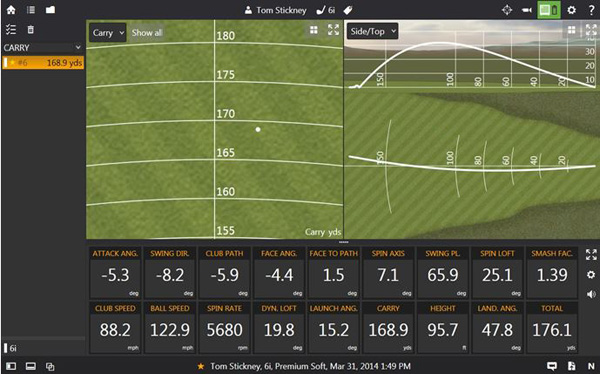
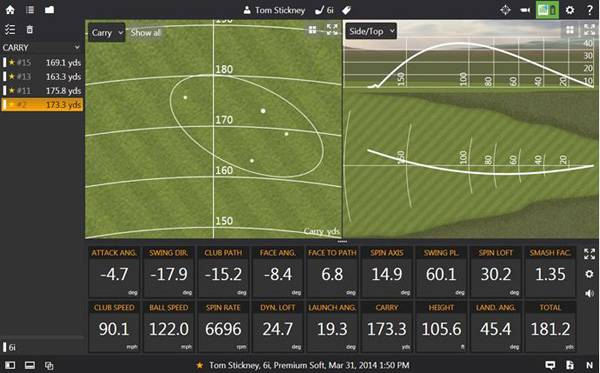
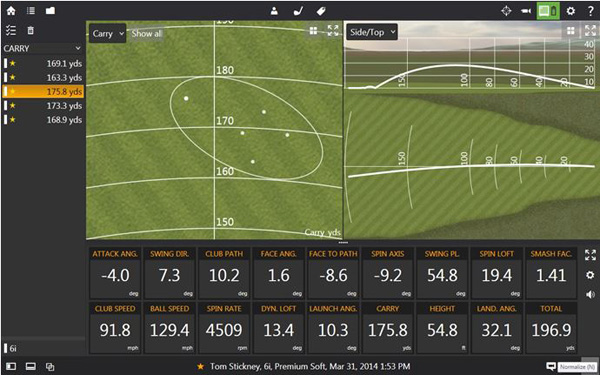
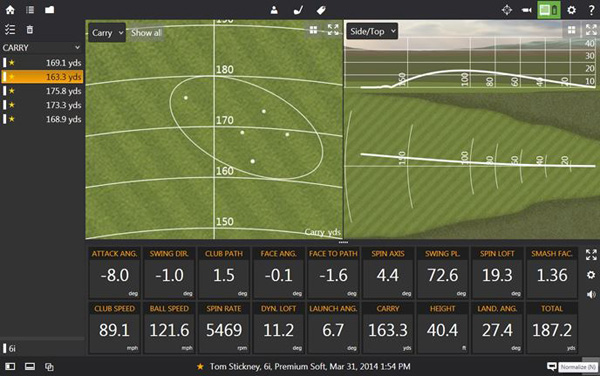
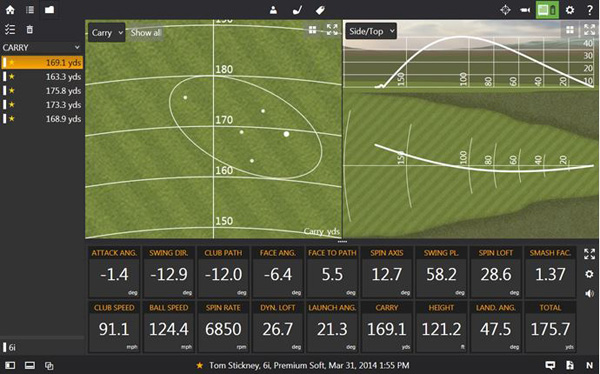





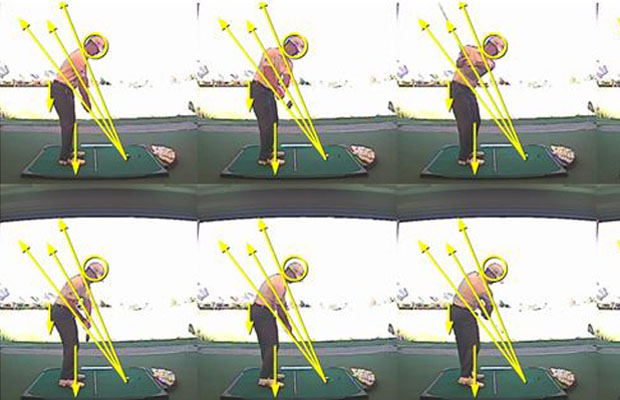
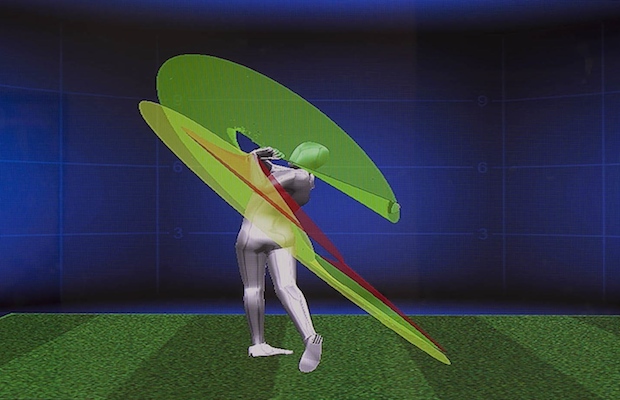

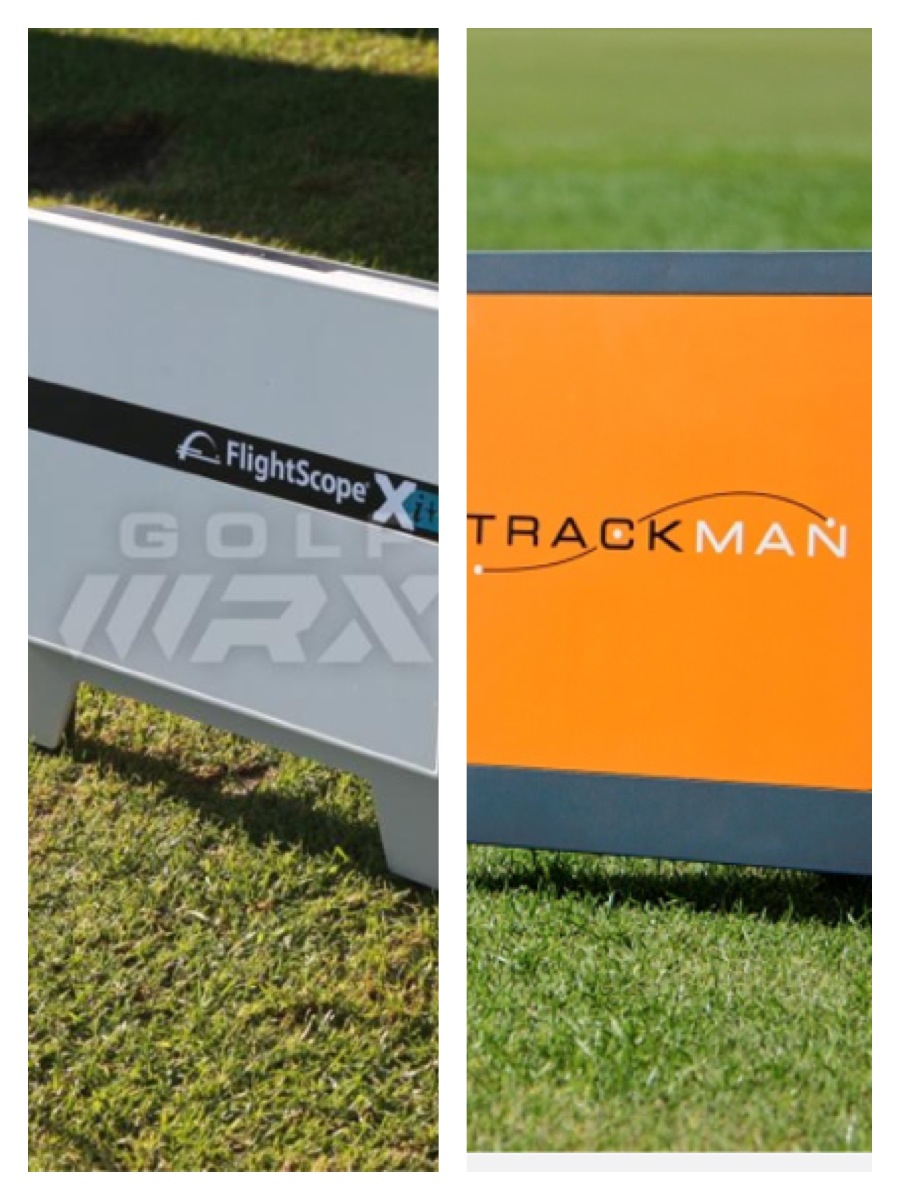
















Manny Martinez
Apr 9, 2014 at 8:49 am
Great article Tom. For your big fade shot you said the spin rate increased because of the larger face to path discrepancy. Face to path is horizontal which tends to sound like side spin. We know that side spin doesn’t happen. AOA to Dynamic Loft is vertical, which sounds more like backspin. Therefore your spin loft increased, which created a higher spin rate. Terminology can be tricky so please advise if I am overlooking something.
Tom Stickney
Apr 9, 2014 at 11:10 am
Correct. Was trying to point out that when I cut across the ball it causes a higher face to path number due to the face being well rt of the path and the ball will curve more to the right. What I neglected to point out was the increase in spinloft you discussed. Trying to make things easier to understand for most can also lead to confusion for others. Sorry for the issue. Thx for the note. 🙂
Zra
Apr 7, 2014 at 12:38 pm
Nice article as usual, Tom!
IMO, the numbers can only explain the shot shape, and a player should learn how to hit each type of shots before he/she starts paying attention to the numbers.
tom stickney
Apr 7, 2014 at 2:30 pm
Couldn’t agree more….shot-making is a lost art due to the ball not spinning as much for the professionals.